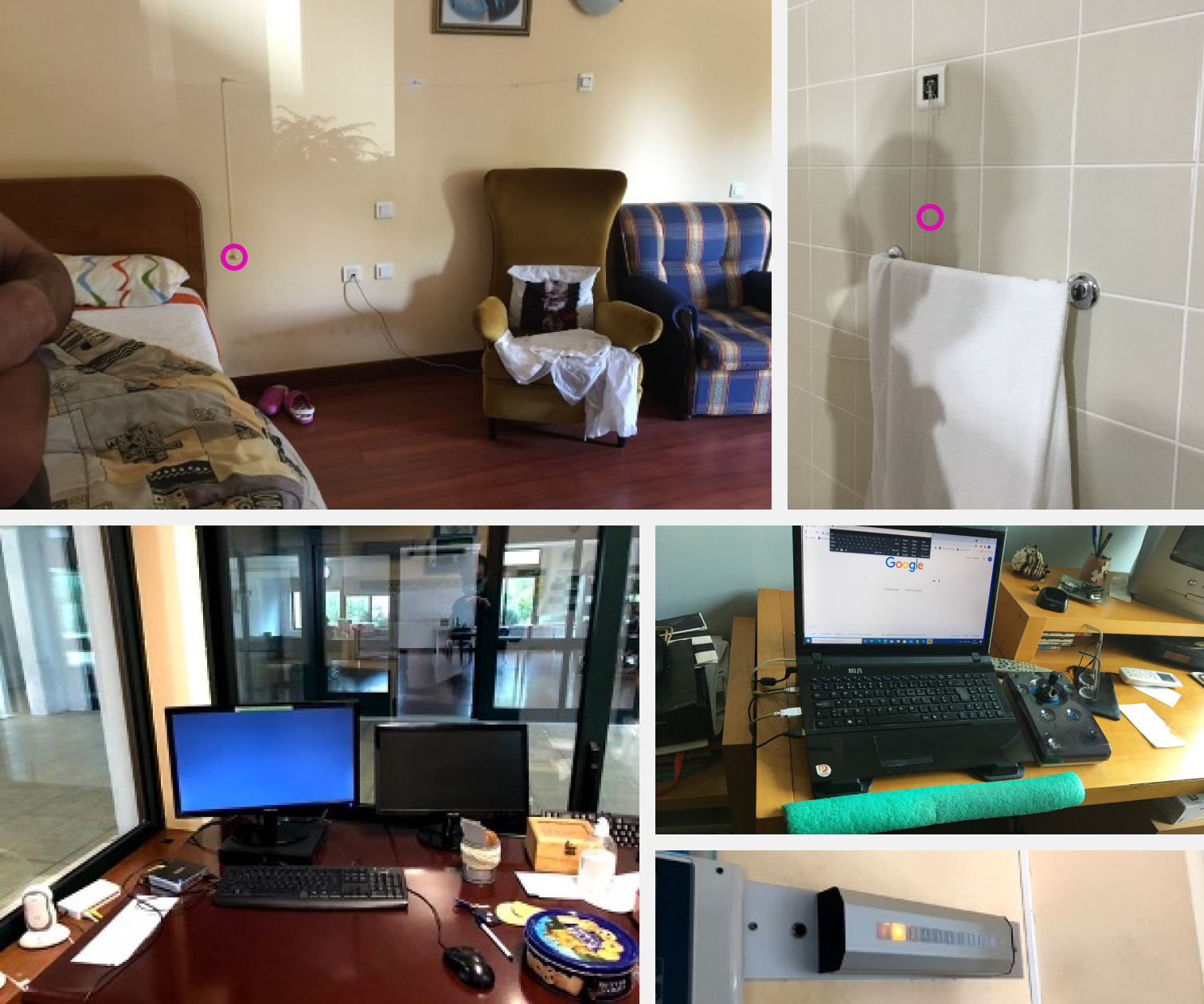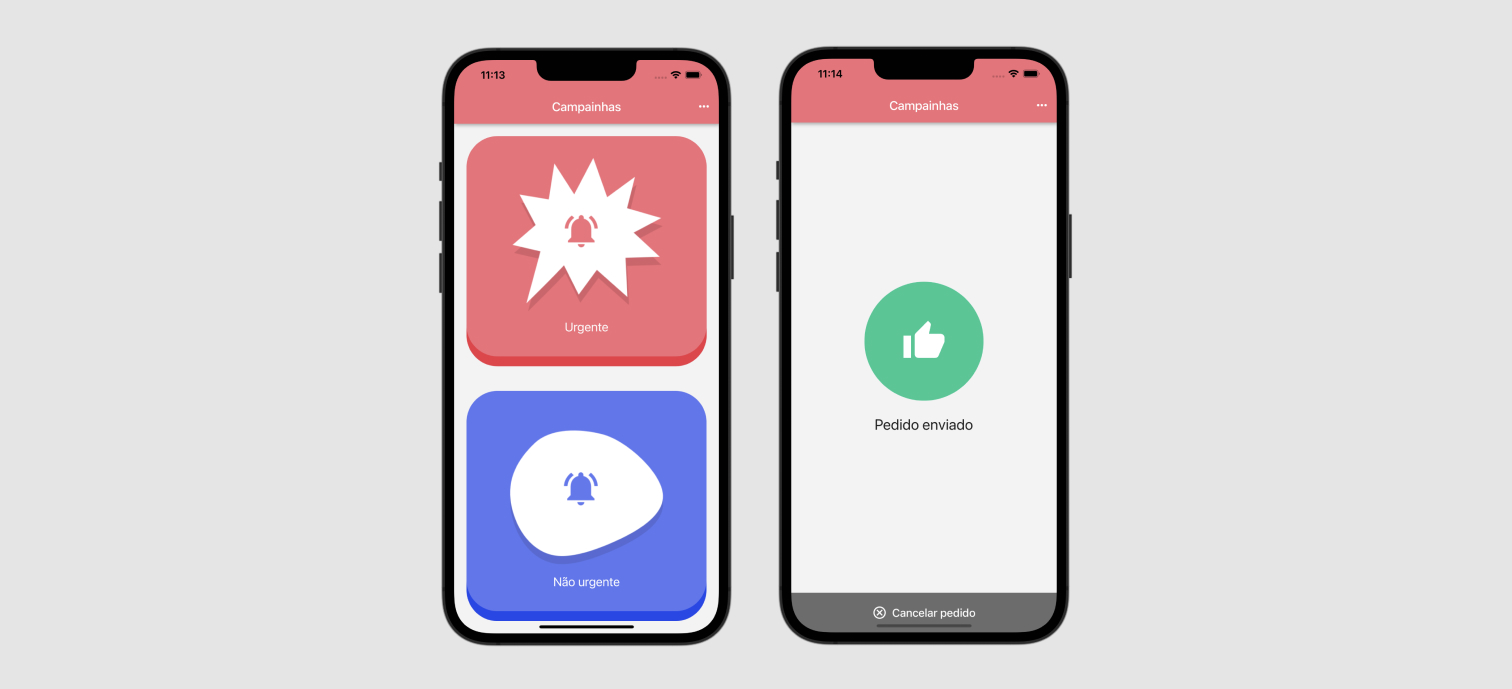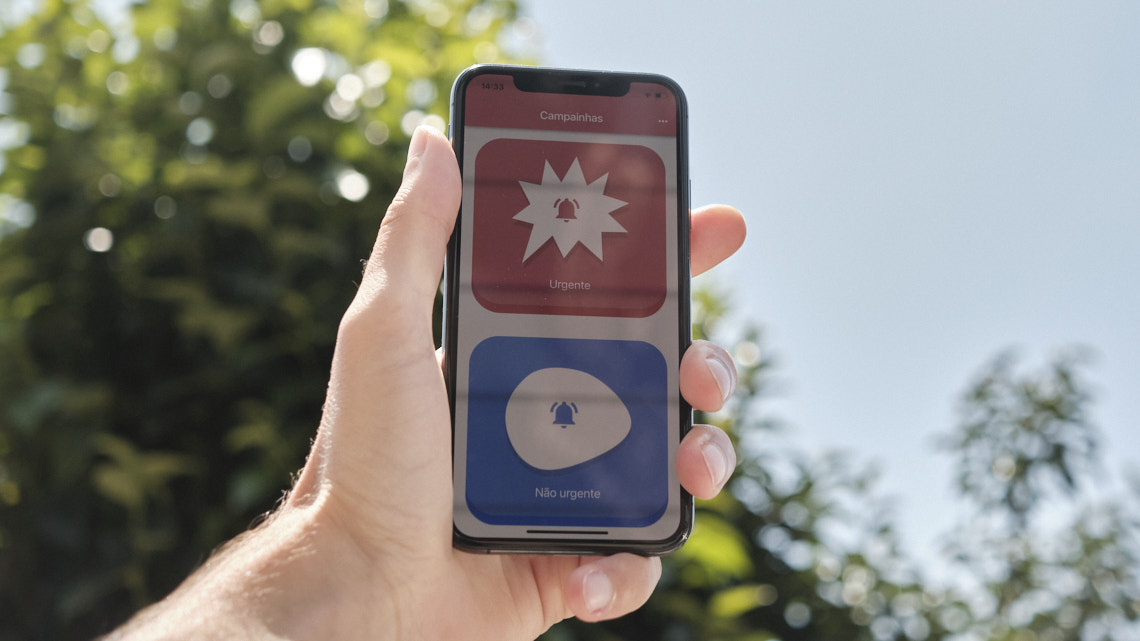Campainhas
In Campainhas we developed a proof of concept of a calling system for APPC (a cerebral paralysis organization), in which residents can call for assistance using their smartphone, tablet, or computer, and where nurse assistants receive call alarms on their smartphone devices. Residents at APPC are people who have cerebral palsy and live semi-independently.
The project received an Honorable Mention from Prémio de Innovação Engenheiro Jaime Filipe, which awards projects that contribute to the well-being of disabled people, promoting their independence, prolonging their physical, cognitive and social capacities, and that create awareness about the need to create inclusive products, services, and technologies.
User research
APPC already had a calling system that residents could use to ask for assistance. However, the bell only rang in the nurse assistants’ rooms, and very often they were not there, so residents complained that nurses took too long to attend to them. We started our design process by trying to understand the current calling system, the environment where these people worked/lived, and the relationship and group dynamics between residents and nurse assistants. We have conducted the following activities:
- Observations at the residency to inform the design
- Informal interviews with residents and assistants
- Interviews with the technical directors and management
- Surveys for the residents (they were filled in with help)

Interface design
Residents application
For the perspective of the resident, the application was quite simple: one button for requesting urgent assistance, an another for non urgent assistance. We were looking to create two buttons that were easily recognizable and that could be even used by people who could not read. We have explored and tested extensively with residents a lot of variations, with different shapes, colors and iconography. The final design combines color and the outer shape to convey the idea of urgency / non-urgency.



Nurse assistants applications
Nurse assistants have two applications for managing residents’ requests: a mobile application, and a web application. Each assistant has their own app that would work as a calling system. Each assistant was responsible for one or more residents, thus, at first, calls are sent to the ‘primary’ assistant, which they can accept or reject. When the call is rejected, or not answered in a short period of time, it is broadcast to all the other nurse assistants on shift.
In addition to the mobile applications, we also developed a web dashboard to be used in the assistants’ ward. On the dashboard, everybody could see all active calls as well as the log of past requests.
